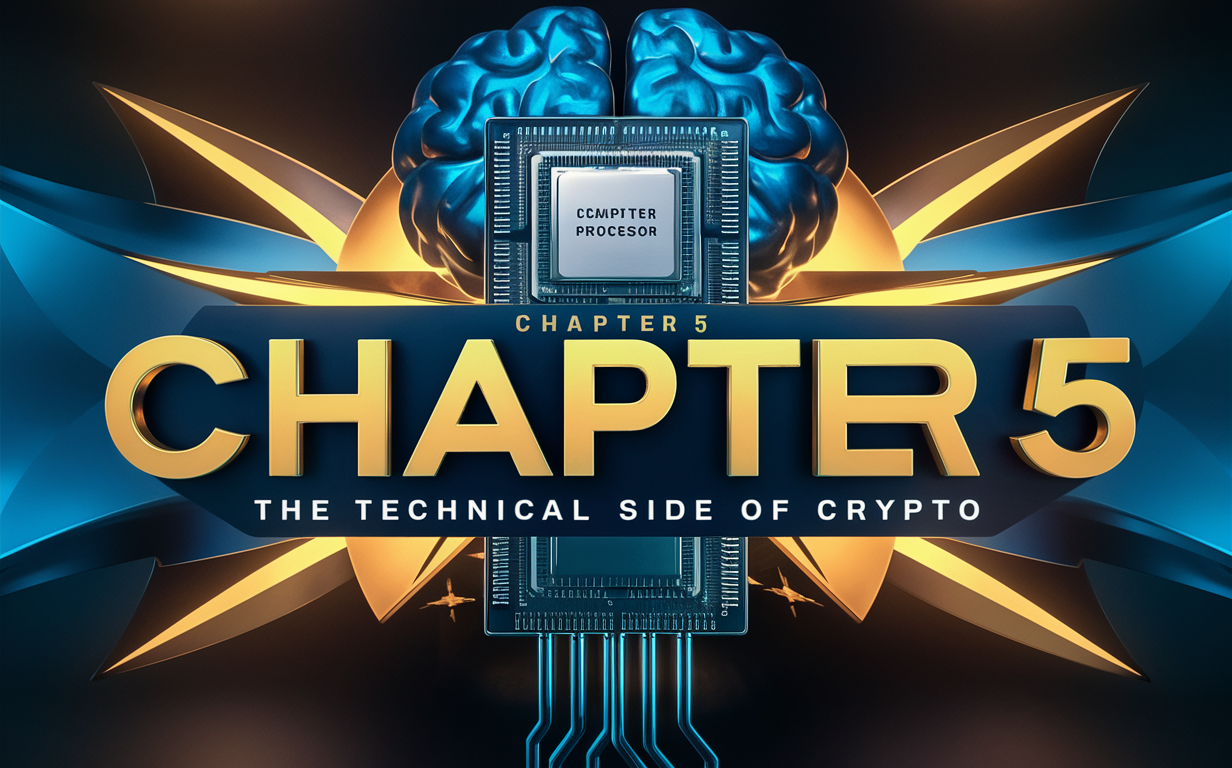Crypto Crash Course : The Technical Side of Crypto
Chapter 5: The Technical Side of Crypto

The Technical Side of Crypto
Alright, now we’re going to dig a bit deeper into the technical side of cryptocurrencies. This chapter will give you an understanding of smart contracts, blockchain development platforms, and decentralized applications (DApps). Don’t worry if you’re not a tech wizard—I'll explain things in a simple and straightforward way.
Smart Contracts
What Are Smart Contracts?
Imagine a traditional contract. It’s a legal document that specifies the terms of an agreement between two parties. Now, imagine if this contract were written in code and executed automatically when its conditions were met. That’s essentially what a smart contract is.
Smart contracts are self-executing contracts where the terms of the agreement are directly written into lines of code. They live on the blockchain, which ensures they are immutable and transparent.
How Smart Contracts Work
Smart contracts work by following simple "if/then" statements written into the code. For example, if Party A sends a certain amount of cryptocurrency to Party B, then the smart contract will automatically execute and deliver a product or service to Party A.
Here’s a basic rundown of how they function:
- Code is Written: Developers write the contract’s code, which includes all the terms and conditions.
- Contract is Deployed: The contract is uploaded to the blockchain.
- Conditions are Met: When the predefined conditions are met, the contract self-executes.
- Outcome is Executed: The agreed-upon outcome happens automatically.
Real-World Applications of Smart Contracts
Smart contracts have a wide range of real-world applications:
- Financial Services: They can automate complex financial transactions, reducing the need for intermediaries.
- Supply Chain Management: They can track goods and ensure that payments are released only when products meet certain criteria.
- Real Estate: They can handle property transactions by automatically transferring ownership once payment is received.
- Voting Systems: They can ensure transparency and security in electoral processes.
Blockchain Development Platforms
Overview of Platforms Like Ethereum, Binance Smart Chain, Polkadot
If you’re interested in building or interacting with smart contracts and DApps, you’ll need to understand the platforms where these are developed. Here are a few of the most popular ones:
- Ethereum: The pioneer of smart contracts and DApps. Ethereum allows developers to create decentralized applications using its robust smart contract functionality.
- Binance Smart Chain (BSC): Known for its fast transaction speeds and low fees, BSC is a popular alternative to Ethereum. It’s compatible with Ethereum’s smart contracts, making it easy for developers to switch between the two.
- Polkadot: This platform focuses on interoperability between different blockchains. It allows various blockchains to transfer messages and value in a trust-free fashion, aiming to create a web of interconnected blockchains.
Differences Between Various Blockchain Platforms
Each platform has its own unique features:
- Ethereum: Highly decentralized, with a strong focus on security and a large developer community. However, it can be slow and expensive due to high gas fees.
- Binance Smart Chain: Offers faster transactions and lower fees but is more centralized, which can be a trade-off between speed and decentralization.
- Polkadot: Prioritizes interoperability and scalability. It uses a unique consensus mechanism called Nominated Proof of Stake (NPoS) and allows for the creation of parachains (custom blockchains) that can interact with each other.
Developing on Blockchain: Tools and Languages
Developing on blockchain platforms usually involves using specific tools and programming languages:
- Ethereum: Development often involves Solidity, a programming language specifically designed for writing smart contracts. Tools like Remix (an online Solidity IDE), Truffle (a development framework), and MetaMask (a browser wallet) are essential.
- Binance Smart Chain: Because BSC is compatible with Ethereum, it also uses Solidity. You can use the same tools as Ethereum.
- Polkadot: Development here often involves Rust or Substrate, a blockchain development framework specifically created for building custom blockchains on Polkadot.
Understanding DApps (Decentralized Applications)
What Are DApps?
DApps, or decentralized applications, are applications that run on a blockchain network rather than on a centralized server. They have similar front-end interfaces as traditional apps but interact with the blockchain for their back-end processes. This means they benefit from the blockchain’s properties, such as immutability, transparency, and decentralization.
Examples of Popular DApps
There are many popular DApps across different sectors:
- Uniswap: A decentralized exchange (DEX) on Ethereum that allows users to trade cryptocurrencies without intermediaries.
- Aave: A DeFi protocol on Ethereum where users can lend and borrow cryptocurrencies.
- CryptoKitties: A blockchain-based game on Ethereum where players can buy, breed, and trade virtual cats.
- PancakeSwap: A DEX on Binance Smart Chain known for its low fees and fast transactions.
How to Create Your Own DApp
Creating your own DApp involves several steps:
- Identify the Use Case: Determine what problem your DApp will solve or what service it will provide.
- Design the Smart Contract: Write the smart contract using a language like Solidity. This will include the logic and rules of your DApp.
- Develop the Front-End: Create the user interface using traditional web development tools (HTML, CSS, JavaScript).
- Connect Front-End to Blockchain: Use libraries like Web3.js or Ethers.js to connect your front-end to the smart contract.
- Deploy the Smart Contract: Deploy your smart contract to the blockchain using tools like Truffle or Hardhat.
- Test and Launch: Thoroughly test your DApp on a testnet before launching it on the mainnet.
Wrapping Up
In this chapter, we’ve delved into the technical side of crypto, exploring smart contracts, blockchain development platforms, and decentralized applications. While it might seem complex at first, understanding these components is key to appreciating the full potential of blockchain technology. Whether you're interested in developing your own DApp or just want to know how these technologies work, you now have a solid foundation to build on. Next up, we’ll look at the crypto economy and its impact on modern finance. Stay tuned!